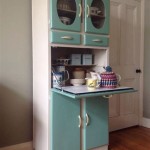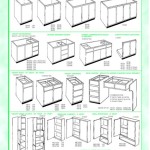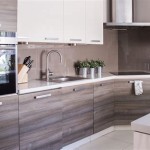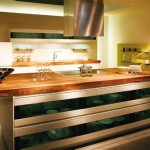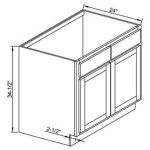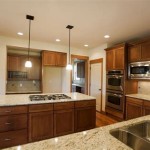Kitchen Cabinet Valances: Enhancing Kitchen Aesthetics and Functionality
Kitchen cabinet valances, often overlooked, play a significant role in enhancing the overall aesthetic and functionality of a kitchen space. These decorative elements, typically mounted above kitchen cabinets, offer more than just visual appeal. They can conceal lighting fixtures, add a touch of personality, and even subtly influence the perceived architectural style of the room. Understanding the different types of valances, their benefits, and how to choose the right one can significantly improve the ambiance and practicality of any kitchen.
This article will explore various aspects of kitchen cabinet valances, encompassing their design variations, the practical advantages they provide, and the factors to consider when selecting and installing them. The intent is to provide a comprehensive understanding of these often-unsung heroes of kitchen design.
Types of Kitchen Cabinet Valances
Kitchen cabinet valances are available in a diverse range of styles, materials, and designs, each contributing a unique character to the kitchen. The selection often depends on the pre-existing kitchen décor, the desired aesthetic, and the functional requirements.
One common type is the traditional valance. These are often crafted from wood and may feature intricate carvings, moldings, and decorative details. They are well-suited for kitchens with a classic or country-style design. Traditional valances often incorporate elements like dentil moldings, raised panels, and ornate scrolls.
Modern valances, in contrast, typically feature clean lines, minimalist designs, and a focus on functionality. These valances are often made from materials like metal, glass, or sleek wood finishes. They complement contemporary kitchen designs characterized by simplicity and a lack of ornamentation. The emphasis is on understated elegance and a seamless integration with the existing cabinetry.
Valances constructed of fabric also exist, bringing a softer, more textural element to the kitchen. These can range from simple, tailored drapes to more elaborate swags or panels. Fabric valances can introduce color, pattern, and a sense of warmth to the kitchen environment. The choice of fabric should consider the overall kitchen style and the potential for exposure to moisture and grease. Easy-to-clean and durable fabrics are often preferred.
Arched valances are defined by their curved shape, adding a graceful and elegant touch to the kitchen. Arched valances can be implemented in various materials, including wood, metal, or even combinations of both. They are particularly effective in softening the hard lines of rectangular cabinets and adding visual interest to the overall design.
Finally, custom-built valances provide the greatest degree of flexibility in terms of design and functionality. These valances are tailored to precisely fit the specific dimensions and style of the kitchen. A benefit of custom valances is the ability to seamlessly integrate lighting, ventilation, or other functional elements directly into the valance structure. These types of valances often require a higher initial investment, but the ability to create a truly unique and personalized kitchen space is often seen as a worthwhile benefit.
Functional Benefits of Kitchen Cabinet Valances
Beyond their aesthetic appeal, kitchen cabinet valances offer several functional advantages. These advantages can enhance the practicality and usability of the kitchen space.
One of the primary functions of a valance is to conceal under-cabinet lighting. This is particularly useful for kitchens where task lighting is essential. By hiding the light fixtures themselves, valances create a more streamlined and visually appealing look. They also diffuse the light, reducing glare and creating a softer, more even illumination on the countertops. This improved lighting enhances visibility and safety while working in the kitchen.
Valances can also be used to conceal unsightly wiring or plumbing. In older kitchens, exposed pipes or electrical conduits can detract from the overall appearance. A valance provides a simple and effective way to hide these elements, creating a cleaner and more polished look. This is especially important in kitchens where aesthetics are a priority.
Another functional benefit is the ability to enhance ventilation. Certain valance designs can incorporate vents or openings that improve airflow around the cabinets. This can help to prevent moisture buildup and reduce the risk of mold or mildew growth. Proper ventilation is crucial for maintaining a healthy and comfortable kitchen environment.
Furthermore, valances can act as a visual barrier, preventing dust and debris from collecting on top of the cabinets. This is particularly useful for taller cabinets that are difficult to reach for cleaning. By creating a sealed or semi-sealed space above the cabinets, the valance reduces the amount of dust and grime that accumulates, simplifying the cleaning process and maintaining a cleaner kitchen environment.
Finally, a well-designed valance can improve the acoustics of the kitchen. By absorbing sound waves, valances can help to reduce echo and create a quieter, more comfortable space. This is especially beneficial in open-concept kitchens where noise can easily travel throughout the living area. Fabric-covered valances are particularly effective at sound absorption.
Factors to Consider When Choosing and Installing Kitchen Cabinet Valances
Selecting and installing the right kitchen cabinet valance requires careful consideration of several factors. These factors include the kitchen's overall style, the available space, the budget, and the desired functionality.
First and foremost, the valance should complement the existing kitchen décor. The style, material, and color of the valance should harmonize with the cabinets, countertops, and other design elements in the room. A traditional kitchen might benefit from a wood valance with intricate carvings, while a modern kitchen might be better suited for a sleek, minimalist metal valance. Consistency in design is key to creating a cohesive and visually appealing kitchen.
The available space is another important consideration. The size and shape of the valance should be proportional to the cabinets and the overall kitchen space. A valance that is too large or too small will look out of place and can detract from the overall design. Accurate measurements are essential before purchasing or building a valance.
Budget is also a significant factor. Kitchen cabinet valances range in price from relatively inexpensive stock options to more costly custom-built designs. It is important to set a budget and stick to it. Consider the cost of materials, labor (if hiring a professional installer), and any necessary modifications to the cabinets or lighting fixtures.
The desired functionality of the valance should also be considered. If the primary purpose is to conceal under-cabinet lighting, the valance should be designed to accommodate the light fixtures and provide adequate ventilation. If the goal is to improve ventilation, the valance should incorporate vents or openings that promote airflow. The valance should be designed to meet the specific functional needs of the kitchen.
Installation is another critical step. While some valances can be easily installed by a skilled DIYer, others may require professional installation. This is especially true for custom-built valances or those that involve electrical wiring. Proper installation is essential to ensure that the valance is secure, level, and functional. It is also important to follow all safety precautions when working with power tools or electrical components.
Finally, consider the maintenance requirements of the valance. Some materials, such as wood, may require periodic cleaning and refinishing to maintain their appearance. Fabric valances may need to be washed or dry-cleaned regularly. Choose a valance material that is easy to maintain and that will withstand the demands of a kitchen environment. A well-maintained valance will continue to enhance the beauty and functionality of the kitchen for years to come.

Kitchen Cabinet Valance Design Ideas

Valance Cabinet Works Custom Cabinets In Eastern Iowa Kitchen Window Treatments Cornice Sink

Kitchen Valance Ideas Top 5 Reasons To Put Cabinet In The

Kitchen Cabinet Valance Design Ideas

Under Cabinet Lighting Concealment Options Superior Cabinets

Kitchen Valance Ideas Top 5 Reasons To Put Cabinet In The

Design Elements Cabinets Custom Wood S Handcrafted

Removing The Scalloped Wood Valance Over Kitchen Sink In My Own Style

Pin By Wayne Blocker On Kitchen Design Over Sink Window Valances Diy Cabinets

Solid Valances Various Designs Cabinet Joint
Related Posts


